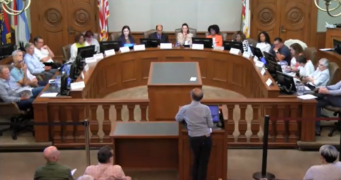
A UCLA study presented to Pasadena’s 710 Stub Advisory Group officials on Wednesday, July 17 revealed that the construction of the 710 and 210 freeways dramatically reshaped the city’s racial makeup between 1950 and 1980, polarizing neighborhoods and increasing segregation.
Dr. Paul Ong, director of the Center for Neighborhood Knowledge at UCLA, presented findings showing that the areas impacted by freeway construction became more racially segregated compared to the rest of Pasadena during this period.
“By the time the freeways were completed, the parts that were completed, we get this transformation of this area. The areas north of the interchange becomes overwhelmingly people of color, whereas the census tract south of the interchange became large majority non-Hispanic white,” Ong said.
The study found that in 1950, the area that would eventually end up as the 710 stub was 52% minority. By 1980, after freeway construction, the minority population in that area had declined to just 23%.
The Center for Neighborhood Knowledge’s research showed that Pasadena as a whole became less segregated over time. This trend began in the 1960s, coinciding with the passage of anti-housing discrimination laws, and the results became increasingly apparent in the 1970s, the report said.
The city’s ‘dissimilarity index,’ a measure of segregation, decreased more sharply than the rest of Los Angeles County. However, the specific areas impacted by freeway construction bucked this trend, becoming more segregated, according to the study.
“We have this contradiction in terms of what these massive infrastructures are doing in terms of residential patterns along race lines,” Ong explained.
In response to a Group member’s question, Ong acknowledged the study’s limitations, noting that the use of census data could miss nuances.
“Using the census tracts misses a number of things,” he said.
The UCLA research highlighted other factors that contributed to segregation, including urban renewal projects, housing policies, and persistent discriminatory practices in the housing market.
One such project cited was the PEPPER development, located northeast of the freeway interchange. Danny Parker, Chair of the Reconnecting Communities 710 Advisory Group, described PEPPER as having “destabilized a stable community of, well-maintained homes including where Jackie Robinson among others grew up. It’s really an unfortunate moment in this city’s history.”
The study’s revelations are likely to inform the group’s ongoing discussions about restorative justice and its role in the redevelopment plans.


















